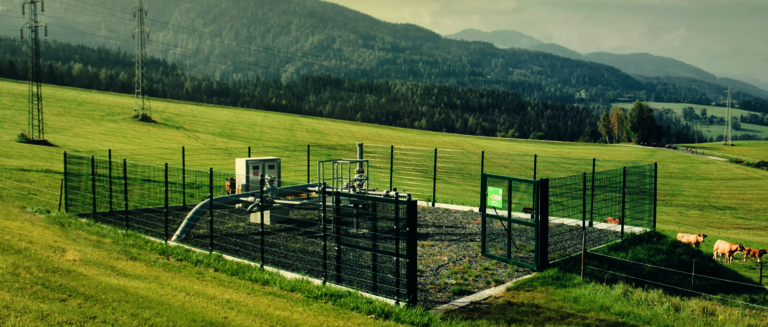- For the first time, an Austrian natural gas pipeline will be converted to transport pure hydrogen for research purposes
- The findings will facilitate and enable all grid operators to convert their gas pipelines in the future
- The construction of a demonstration plant and the development of a manual will be used to support the European Hydrogen Backbone Initiative
Graz, Austria. Climate-neutral hydrogen has an important role to play in Europe's efforts to achieve its net zero greenhouse gas emissions target by 2050. By then, hydrogen will have replaced fossil fuels in many areas. The existing natural gas infrastructure is key to successfully transporting hydrogen. In the future, pipelines that were previously used for natural gas are to transport hydrogen to consumers. The European Hydrogen Backbone Initiative has also developed an implementation concept for hydrogen pipeline infrastructure that relies largely on converted natural gas pipelines.
Since October 2022, the “HyGrid2” project, supported by the Austrian Research Promotion Agency (FFG), has been conducting studies to facilitate the transport of pure hydrogen using existing natural gas infrastructure. A consortium consisting of the “Österreichische Vereinigung für das Gas- und Wasserfach” (Austrian Gas and Water Association – ÖVGW), research institutions and industrial services provider Bilfinger, under the leadership of Energienetze Steiermark GmbH, aims to put the knowledge gained in “HyGrid2” to use in an effort to answer open questions by 2025. The findings are expected to make future conversions possible. These include the inspection and cleaning of the pipelines, the quality of the transported hydrogen, the application-oriented purification of H2, and the H2 compatibility of the individual components and materials used.
In the course of the project, the first Austrian natural gas steel pipeline section in the grid territory of Energienetze Steiermark will be converted for hydrogen transport and developed into a demonstration plant with the help of Bilfinger’s Austrian subsidiary Bilfinger Industrial Services GmbH. The former natural gas pipeline will be operated with pure hydrogen under realistic conditions in order to gather insights needed for practical application.
The special challenge presented by the conversion lies, on the one hand, in the requirements for the purity of the piping systems. For existing pipelines that are converted to transport hydrogen, the previous use is relevant and has an impact on the quality. An additional factor in the "HyGrid2" pipeline conversion project is that the network section was operated with odorized gas, which means that gas that was mixed with odor-intensive substances: In Austria as well as in some other countries such as France and Norway, the nearly scentless natural gas is odorized with sulfur-based compounds when it enters the gas distribution network in order to make an unintentional gas leak detectable at an early stage. Within the framework of HyGrid2, studies to determine what impact piping systems that were used for odorized gas could have on the quality of transportable hydrogen are therefore essential for the operation of converted pipelines.
As part of its “Green Gas 4 Grids” research program, ÖVGW has already conducted the “HyGrid” pilot study to investigate which impurities can occur in the hydrogen when it flows through pipelines that have been repurposed from natural gas pipelines to pure hydrogen pipelines. Such impurities can include odorants or other components of natural gas.
Another challenge is the material suitability of the existing infrastructure for hydrogen transport. Here, in contrast to natural gas, so-called “hydrogen embrittlement” can occur, i.e. diffusion and dissolution of hydrogen in the microstructure of metal pipes. Over time, this can lead to pipeline damage and thus to the formation of leaks. Bilfinger intends to use the pipeline demonstrator to test the existing natural gas infrastructure for its suitability for hydrogen transport using various non-destructive testing methods and to modify it in whatever way necessary.
“HyGrid2” further aims to put the results of the pipeline demonstrator to use in order to create a manual for successful natural gas pipeline conversion. This manual will cover the technical, economic and legal framework conditions and will include the current state of science as well as the regulatory requirements and organizational processes. The reference manual will serve as a guideline to accelerate the conversion of natural gas pipelines for H2 transport in the future, so that green hydrogen can realize its potential for a fully sustainable and independent energy supply.
HyGrid² is a research project funded by the Climate and Energy Fund and conducted as part of the “Model Region Energy” WIVA P&G program.
Project consortium: Bilfinger Industrial Services GmbH, ÖVGW, DBI Gas- und Umwelttechnik GmbH, Energienetze Steiermark GmbH, Materials Center Leoben Forschung GmbH, HyCentA Research GmbH, Montanuniversität Leoben - Chair of General and Analytical Chemistry, WIVA P&G


